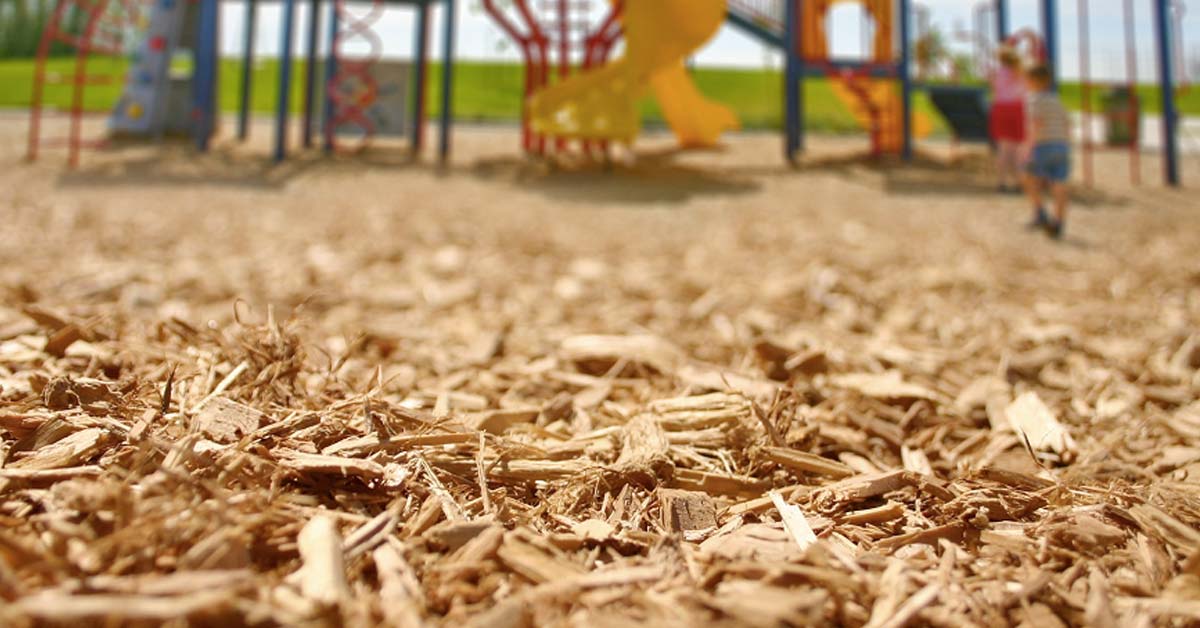Playground surfacing is often the last thing people consider when clients describe their playground concept; in fact, many customers have not considered playground surfacing at all. However, choosing a surfacing is one of the most important decisions you will make during the planning and design process. There are two basic types of surfacing: loose fill and unitary surfacing. Each type has its own advantages and disadvantages. Understanding how they installation and what sort of maintenance they require are fundamental to making an informed purchase.
Playground Surfacing Basics
All playground surfacing is designed to provide a stable play surface and prevent injury by absorbing impact from falls. The ability of a surfacing to absorb force is called impact attenuation. There are tests designed to measure impact attenuation of surfacing and as certain types of surfaces age. They may need to replacing after years of use and exposure to weather. The higher children can climb on equipment, the more shock absorbing the surfacing surrounding it must be. For this reason there may be several different depths of surfacing throughout a given playground.
Loose Fill Surfacing
Loose fill playground surfacing absorbs impacts like packaging peanuts and requires some excavation beneath the playground to create an adequate depth to absorb impact. Redistribute loose fill surfacing from time to time as it scatters away from equipment when children play. Replenished natural products yearly to compensate for natural degrading.
Engineered Wood Fiber
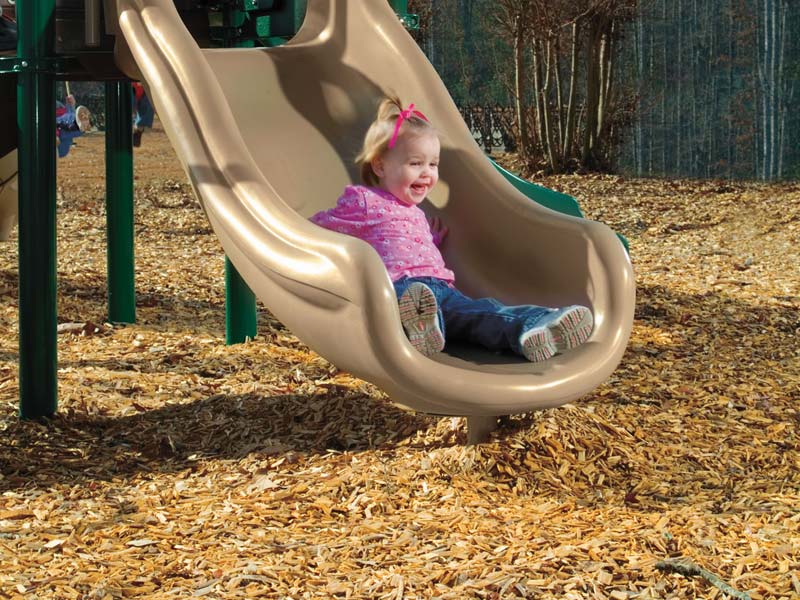
Unlike landscaping mulch, engineered wood fiber (EWF) mulch is made from natural wood. However, it’s not the same as mulch you use to prevent weeds in your home garden. EWF must meet certain size standards and is subject to a special milling process. This process causes the fibers interlock to form a relatively firm and smooth surface after use. Unlike garden mulch EWF isn’t treated with anything that may be harmful to children and will only experience minimal splintering.
Rubber Mulch
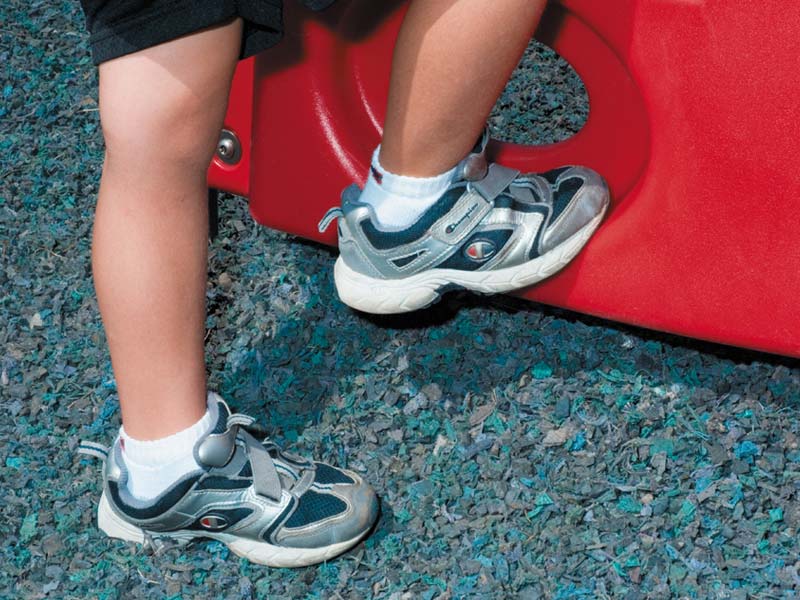
Rubber mulch works much like EWF but is more durable. Unlike earlier incarnations of this product, rubber mulch now features a coating to prevent color transfer and is free from wires and metal remnants. Overall, rubber mulch works much like its wood counterpart; individual pieces lock together and form a stable walking surface. Unlike EWF, which naturally degrades over time, rubber mulch will last almost indefinitely. Moreover, it should stay in the playground area thanks to its design which prevents it from floating or blowing away.
All loose fill playground surfacing is mobile in nature and must be contained into your play area using existing barriers, such as sidewalks or specially installed playground borders. Over time, even well protected loose fill options may wash away and need to be replenished.
Helpful Hint: Manufacturers place stickers indicating the minimum fill depth of loose fill surfacing onto playground equipment. Playground borders often have a fill to line stamped onto the inside rim. If you can see the fill to line, you don’t have enough surfacing due to compaction, decomposition or washing away.
BYO does not recommend, sell or install pea gravel, wood bark or sand as a playground surface. These surfaces do not provide adequate shock absorption or protection from falls. Additionally, sand is not ADA compliant, regardless of the equipment installed there.
Unitary Surfacing
Unitary playground surfacing comes in three basic styles, rubber tiles, playground turf and poured in place surfacing. These surfacing options have the highest upfront cost but are more durable, have lower freight costs and higher impact absorbency. Whereas loose fill surfacing is out of the way in impact zones, like the bottom of slides and directly beneath swings, unitary surfacing slowly wears in these areas and may very rarely require patching or replacement. The regular use of impact mats in these areas will virtually eliminate this problem. After several years of use it may be advisable to have an impact absorption test on your playground by a certified playground safety inspector.
Rubber Tiles
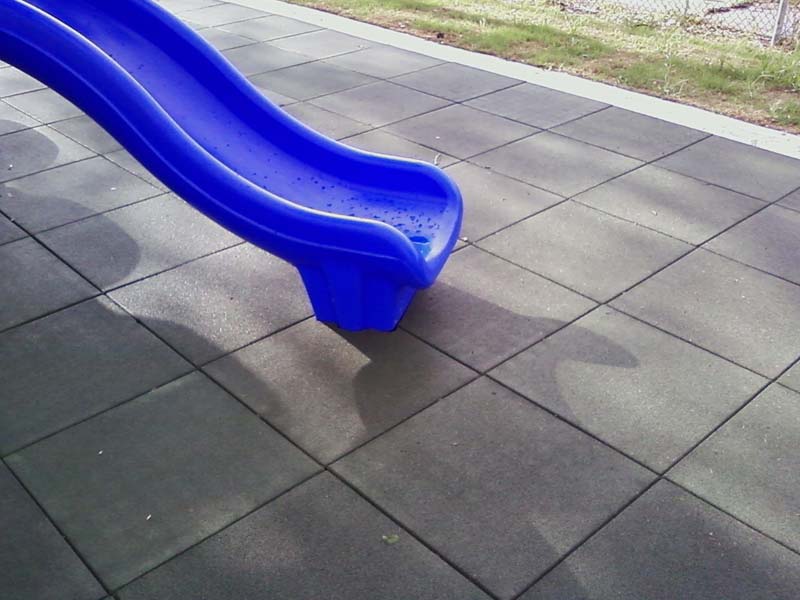
The use of Rubber tiles have changed a lot since their introduction. Contemporary tiles lock together to form a smooth surface over top yet more rubber impact surfaces. Thanks to new technology, today’s tiles don’t bend or split like earlier editions and are extremely durable. Like other rubber products, tiles come in a variety of colors that form a combination of fun patterns. If you plan to move your playground at a later date or relocate facilities entirely, rubber tiles are a wonderful option. You can easily install, remove, and relocated rubber tiles without compromising safety.
Poured-In-Place
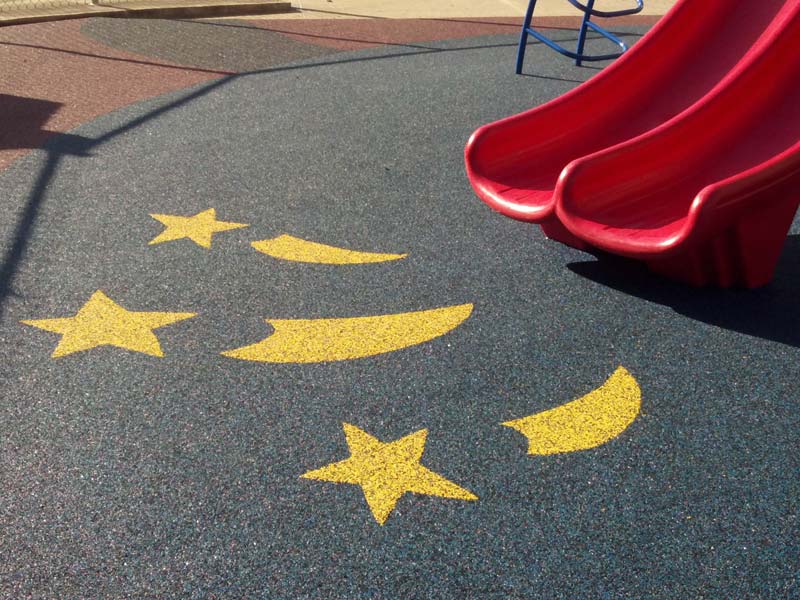
Poured- in-place surfacing is poured and troweled into place in a process similar to laying concrete. Poured-in-place surfacing is available in virtually any design or pattern you can imagine. Customizations adds play value through creative, imaginative patterns or built in hopscotch or 4 square courts. It also has the highest impact absorbency and is simple to repair should it become damaged.
Playground Turf
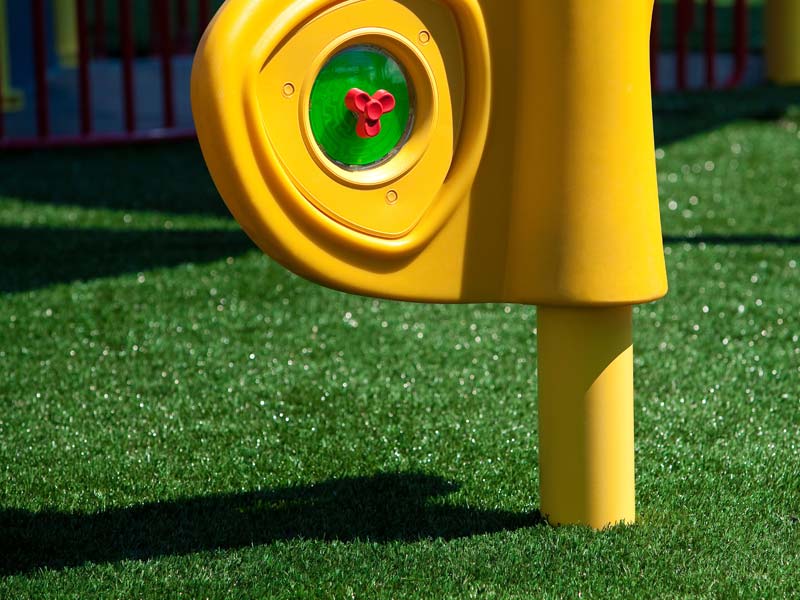
Playground turf, is probably the most unique and most attractive surfacing option on the market today. Turf handles impacts every bit as well as poured in place at a comparable cost per square foot. It’s also lighter in weight than any other option, greatly reducing shipping costs. Additionally, repairs are simple should it be damaged by misuse or vandalism. There are several versions of turf on the market for use in playgrounds and many are antibacterial and antimicrobial.
Compare Your Options for Playground Surfacing
Determining which type of surfacing is best for your playground is a very personal decision. Due to their mobile nature, loose fill surfaces, despite their relatively low upfront cost, will have to be ‘topped off’ periodically. Over the years the maintenance cost of loose fill surfaces, as well as the commitment to regularly redistribute mulch is an important factor that eliminates this option for many locations.
Unitary surfacing may be the only option when installing a playground at an indoor facility or over an existing concrete or asphalt pad. Although the installation and material costs may be higher at first, the yearly maintenance costs are relatively nonexistent unless the playground is subject to vandalism or some sort of extraordinary circumstance.
The shipping cost of unitary surfacing is also more fixed in general whereas EWF in particular may be impacted by local ordinances and the greater weight of loose fill surfacing may raise costs even higher than unitary surfacing if your location is a considerable distance from a supplier. It is often best to consider several types of surfacing fitted to your location and playground before making a decision.
→ FOR MORE DETAILS ON SURFACING CHECK OUT OUR FREE PLAYGROUND SURFACING GUIDE HERE!
